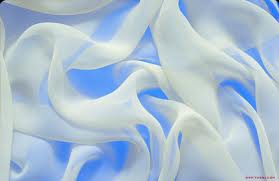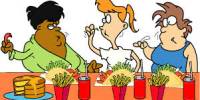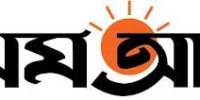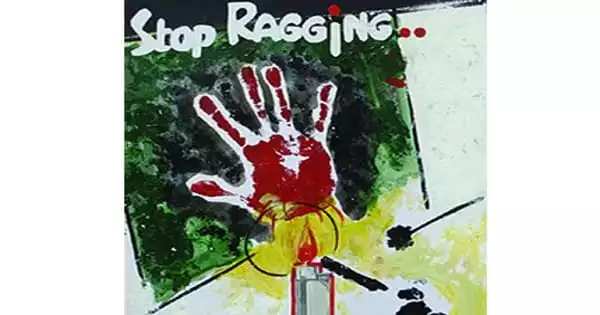Production department:
Production-along with marketing, merchandising, operation, finance is one of the
Essential functions in apparel manufacturing. Apparel production involves the conversion of materials (INPUT) into completed, salable garments (output) flat pieces of goods are cut, shaped, assemble, and trimmed as they converted into specific styles to meet customer needs. Production process may be carried out in a firm’s own plant and sourced from other firms located in any place. Production plants specialize in a certain types of materials and finished goods because of the limitation of equipment, skills and expertise available.
CUTTING SECTION:
Cutting is the production process of spreading (Sectioning, carving, serving ) a spread into garment parts that are the precise size and shape of the pattern pieces on a marker. The cutting process may also involved transferring marks and notches from the marker to garments parts to assist operator in sewing. Chopping or sectioning a spread blocks of pieces goods may precede precision cutting of individual pattern shapes. This is often done to allow for accurate machine of fabrics design or easier manipulation of a cutting knife.
Fabrics pieces may be cut to predetermined length for matching patterns or for additional processing such as screen printing. Spreads of plaid fabrics may be pre sectioned into block so the design on the fabrics can be perfectly matched before cutting to the shape of the pattern pieces. Per sectioned pieces may be also be also garment parts knitted to specific finished lengths such as sweater bodies. Per sectioned pieces such as leather or other specialty fabrics may be spread and cut as a single ply or laid up and cut as a multiple – ply spread.
The cutting process may also involve in sewing.
Function of cutting in charge:
The most important functions of cutting in charge:
- Examine incoming orders and width and availability of pieces goods
- Determine volumes size ratios, sectioning procedure for making marker
- Determine whether the file maker are available or new ones are needed
- Determination specification for optimum marking and fabrics utilization
- Determining most effective use of spreading and cutting equipments
- Issuing orders for making spreading and cutting
Function of pattern and marker
All the patterns in each size of a style are verified that is cheeked very carefully before sending them to cut order planning. Pattern verification includes checking the followings—
- Correctness of grade incremental
- Competitively of reading with styles specifications
- Length and alignment of adjoining seam allowances
- Notch placement and alignment with adjoining pattern pieces
- Placement of internal markings \Placement of grain marking.
Sewing section
Sewing section can be divided into following sub-section on the basis of their functions:
Function of production managers:
Production managers are responsible for managing in a firm’s styles through conversion process. Managing production in owned facilities involves people, process, equipment and facilities. Managing production through vendors involves evaluation of production facilities, negotiation of price quotas and delivery and monitoring quality
Production managers are the head of production department. He is who takes all the decision in the development of the desired requirement of the buyers. He takes all the decision in the decision making table. His main job may be divided into planning and coordinating function.
Planning:
Production standards are used in production planning to do the following:
- Estimate the rate or production for completion of each operation
- Determine the required capacity for an order or style
- Determine production start dates and completion dates for orders
- Plane the daily volume that should be completed
- Determine the back inventory needed to support the work flow
- Determine how many operators and machine should be performing each operation
Function of floor chief:
The function of floor the floor chiefs are to control the floors attain the maximum output from the floor. He coordinates among the worker in the floor. He is accountable to the production manager. He follows the instruction received from the product manager.
His main function is as follows:
- Floor layout
- Setting line layout
- Manpower setting in a line
- Allocation of manpower
- Setting machine and accessories
- Setting over time
- Allocation of the line for particular style to increase productivity
- Helping or supporting the line chief
- Coordinative functions with other departments like cutting, finishing, quality and sub store as well as sample section
- Allocation of line chief and supervisor in a particular time
Function of line chief:
Line chief is accountable to the floor chief. He coordinates with the supervisor and operates as well. The following are the functions of line chief.
- Target achievement
- Quality assurance
- Proper utilizations of worker
- Line layout and assembly of the machine in a particular line as per line layout diagram
- Allocates operators for particular job
- Sequential of production process in the assembly line
- Machine layout
- Allocation of folders and accessories
- Coordination among the supervisors and floor chief.
- In case of problem, which can not be solved by the supervisors
- Preparation of the over time in case of needed
- Solving bottleneck
CUTTING SECTION:
Cutting is the production process of spreading (Sectioning, carving, serving ) a spread into garment parts that are the precise size and shape of the pattern pieces on a marker. The cutting process may also involved transferring marks and notches from the marker to garments parts to assist operator in sewing. Chopping or sectioning a spread blocks of pieces goods may precede precision cutting of individual pattern shapes. This is often done to allow for accurate machine of fabrics design or easier manipulation of a cutting knife.
Fabrics pieces may be cut to predetermined length for matching patterns or for additional processing such as screen printing. Spreads of plaid fabrics may be pre sectioned into block so the design on the fabrics can be perfectly matched before cutting to the shape of the pattern pieces. Per sectioned pieces may be also be also garment parts knitted to specific finished lengths such as sweater bodies. Per sectioned pieces such as leather or other specialty fabrics may be spread and cut as a single ply or laid up and cut as a multiple – ply spread.
The cutting process may also involve in sewing.
Function of cutting in charge:
The most important functions of cutting in charge:
- Examine incoming orders and width and availability of pieces goods
- Determine volumes size ratios, sectioning procedure for making marker
- Determine whether the file maker are available or new ones are needed
- Determination specification for optimum marking and fabrics utilization
- Determining most effective use of spreading and cutting equipments
- Issuing orders for making spreading and cutting
Function of pattern and marker
All the patterns in each size of a style are verified that is cheeked very carefully before sending them to cut order planning. Pattern verification includes checking the followings—
- Correctness of grade incremental
- Competitively of reading with styles specifications
- Length and alignment of adjoining seam allowances
- Notch placement and alignment with adjoining pattern pieces
- Placement of internal markings \Placement of grain marking.
Sewing section
Sewing section can be divided into following sub-section on the basis of their functions:
Function of production managers:
Production managers are responsible for managing in a firm’s styles through conversion process. Managing production in owned facilities involves people, process, equipment and facilities. Managing production through vendors involves evaluation of production facilities, negotiation of price quotas and delivery and monitoring quality
Production managers are the head of production department. He is who takes all the decision in the development of the desired requirement of the buyers. He takes all the decision in the decision making table. His main job may be divided into planning and coordinating function.
Planning:
Production standards are used in production planning to do the following:
- Estimate the rate or production for completion of each operation
- Determine the required capacity for an order or style
- Determine production start dates and completion dates for orders
- Plane the daily volume that should be completed
- Determine the back inventory needed to support the work flow
- Determine how many operators and machine should be performing each operation
Function of floor chief:
The function of floor the floor chiefs are to control the floors attain the maximum output from the floor. He coordinates among the worker in the floor. He is accountable to the production manager. He follows the instruction received from the product manager.
His main function is as follows:
- Floor layout
- Setting line layout
- Manpower setting in a line
- Allocation of manpower
- Setting machine and accessories
- Setting over time
- Allocation of the line for particular style to increase productivity
- Helping or supporting the line chief
- Coordinative functions with other departments like cutting, finishing, quality and sub store as well as sample section
- Allocation of line chief and supervisor in a particular time
Function of line chief:
Line chief is accountable to the floor chief. He coordinates with the supervisor and operates as well. The following are the functions of line chief.
- Target achievement
- Quality assurance
- Proper utilizations of worker
- Line layout and assembly of the machine in a particular line as per line layout diagram
- Allocates operators for particular job
- Sequential of production process in the assembly line
- Machine layout
- Allocation of folders and accessories
- Coordination among the supervisors and floor chief.
- In case of problem, which can not be solved by the supervisors
- Preparation of the over time in case of needed
- Solving bottleneck
Function of Supervisor:
Supervisor is called the first line the executive in the floor. Their functions as follows
- Supervisor operates and helpers in all the operation
- Constant monitoring the of materials and the accessories
- Ensure quality output
- Ensure productivity
- Solving operational problems in case of productivity
- Solving bottleneck
- Training operator to achieve desired output
- Development of skilled operator
- He is a motivator
- Supervising operators and helpers in a line
- Allocation of job to operators and helpers
- Development of helper to operator
Function of operator:
Operator is the one who occupies the maximum number in the assembly .They are the one who really sweat for the productivity in an organization. Their outcome is the outcome of the company. They are the one who contribute more in the garments sectors the operator is the most important person in the factory.
The function pf operator is as follows:
- Assembling parts
- Proper handling of machine and parts
- Ensures quality
- Ensures capacity target
- Ensures measurement of garments as per instruction
- Ensures allowances as requirements and instruction
- Ensures productivity
- Reduce wastage, alter and rejections
- Informing supervisors in case of handicap in regards to operations and machine as well
- Ensures utilization of numbers to reduce quality rejects
















